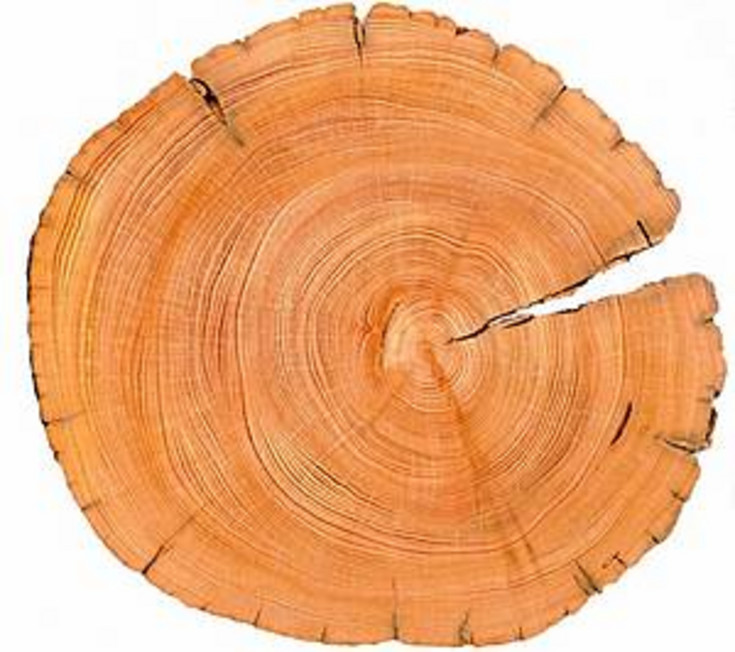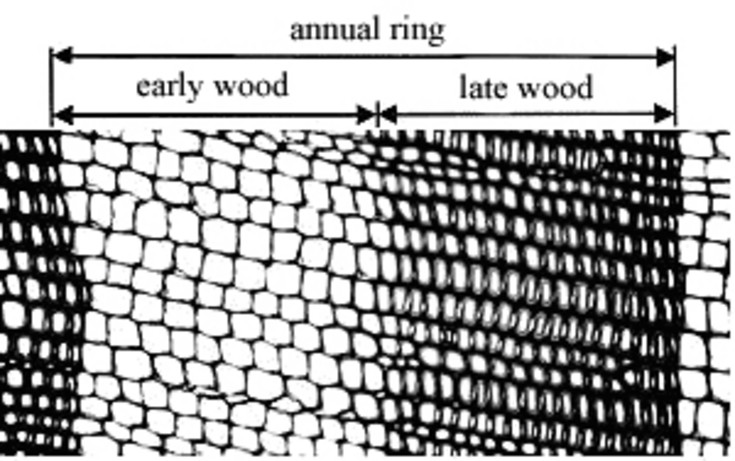DENDROCHRONOLOGY
The age of a tree can be estimated by counting the annual rings of a trunk. Furthermore, it’s possible to see that the rings have different widths, which is obviously due to “good” and “bad” years during the growing season. Annual rings are a speciality of temperate zones, which are characterized by the discontinuity of the growing season - the dormance during winter (Figure 1). The most remarkable part about a tree is the so called “Cambium”, which is a layer of living cells that each year produces additional wood- (on the inner side) and bark- (on the outer side) cells and is responsible for the radial growth of a tree. In that way a tree forms another layer, over the old, existing ones - each year. Figure 1: Stem disc of an old larch (285 years old) The cellular structure of coniferous trees shows a simple texture, as it mostly consists of tracheids. Those just differ in form and function (Figure 2). The varying density between the brighter earlywood (grown during spring and early summer) and the darker latewood (grown during late summer) allows an easy distinction of the annual rings. The cell- structure of deciduous trees differs from conifers by clearly visible vessel cells, a high proportion of longitudinal parenchyma cells and strengthening fibres (Schweingruber 2001). Figure 2: Micro-cross-section of a pine tree ring The formation of wood is complex and influenced by environmental factors. However, it is obvious that during a warm and rainy summer trees grow faster than during a hot and dry one. Such weather trends result in a distinct curve of tree ring width, which could be part of a continuous chronology. Numerous single curves of a region have to be synchronised, that means, statistical as well as visual comparisons have to be done - resulting in a mean curve, called the chronology. Adding sufficient numbers of curves, the set up of chronologies reaching further back in time can be set up. Therefore, wood specimen from historical buildings as well as archaeological excavations have to be analysed (Figure 3). To date a wooden sample, the tree ring sequences have to be compared stepwise statistically and visually with standard chronologies. High statistical significance, high visual correspondence as well as plausibility in relation to the results of parallel retained samples are the basis of a well conducted dating process. The year of felling can be determined accurately if the specimen contains rests of bark (“wane”). Figure 3: The principle of historical dating Further information: projects
equipment
existing chronologies
services
publications
links



